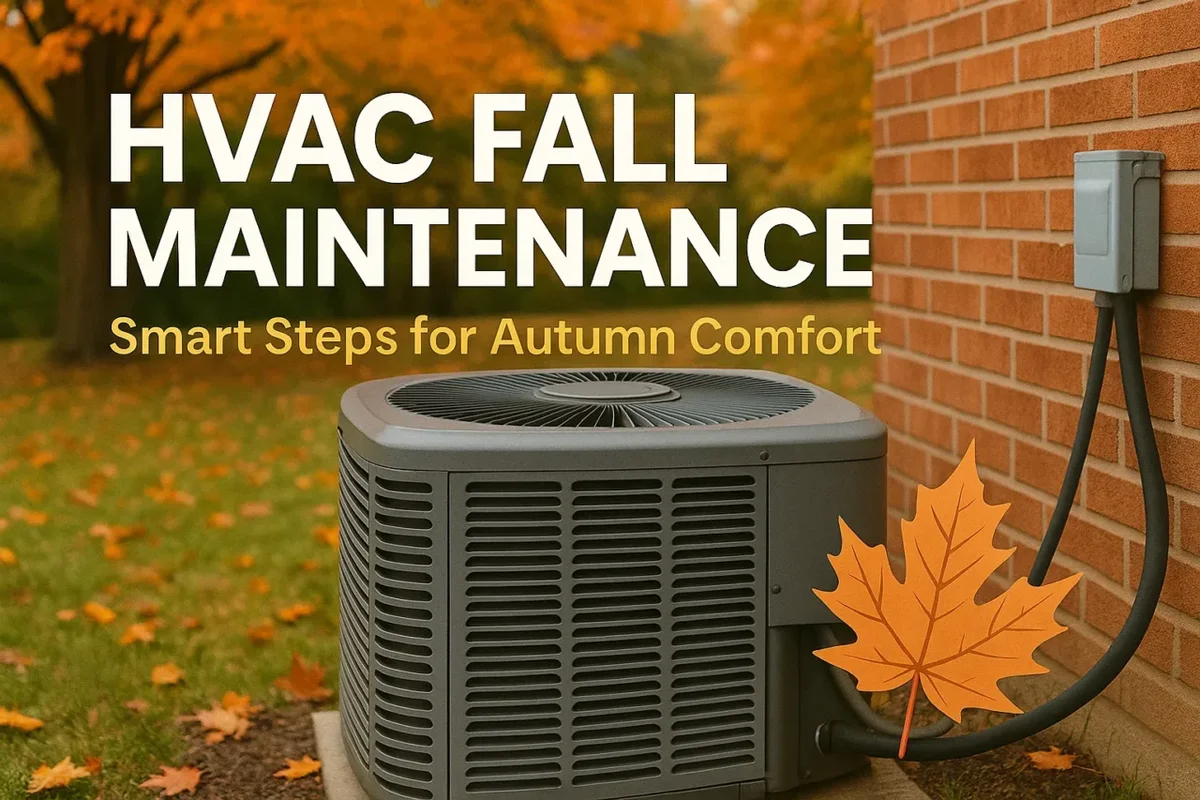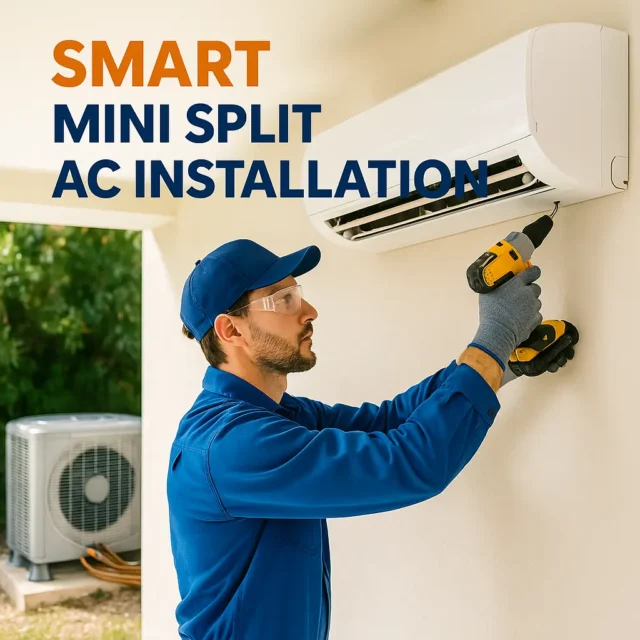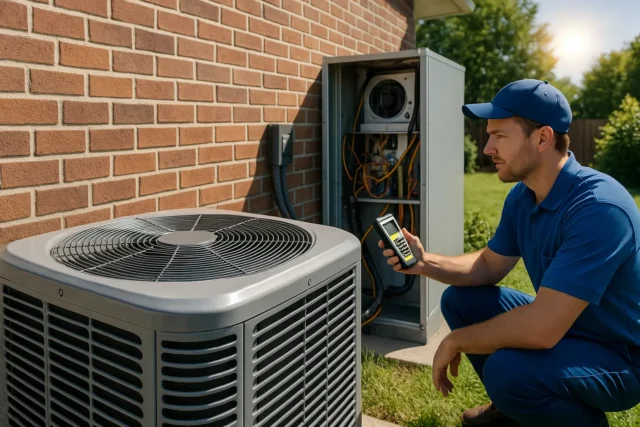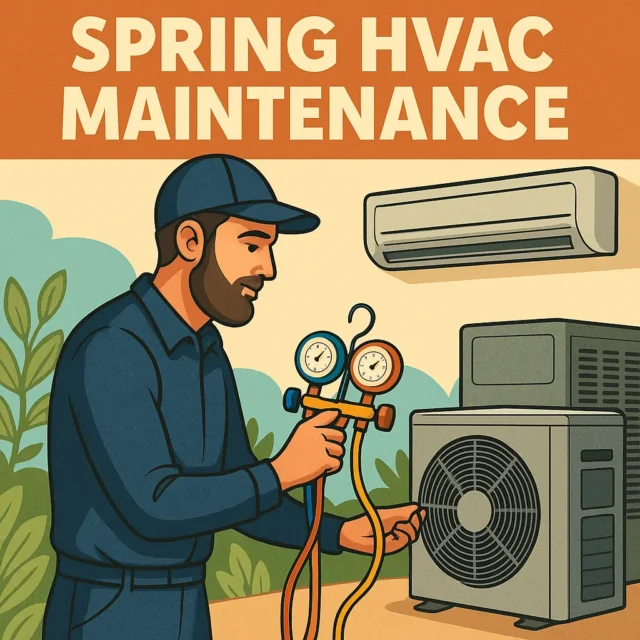HVAC Fall Maintenance: Smart Steps for Autumn Comfort

As autumn approaches, the air cools, leaves fall, and homeowners shift their focus from cooling to heating. It’s also the perfect time to prepare your HVAC system for seasonal changes. Proper hvac fall maintenance ensures efficiency, reduces energy bills, and protects your comfort when temperatures drop.
While many people think of furnaces or AC units first, the Air Handler is the unsung hero of HVAC systems. Paying attention to its upkeep in fall can make a huge difference in performance and indoor air quality. In this expanded guide, we’ll explore why HVAC maintenance matters, what steps to take, and how to keep your system in peak condition.
Why HVAC Fall Maintenance Is Essential
Skipping seasonal maintenance may seem harmless, but HVAC systems work harder when neglected. Over time, dust, moisture, and wear create inefficiencies that can lead to:
Higher energy bills due to reduced efficiency.
Uneven indoor comfort, with hot or cold spots.
Frequent breakdowns during peak demand.
Shortened lifespan of major components.
Lower air quality, triggering allergies and respiratory issues.
In fall, these risks increase because systems transition from cooling to heating. This shift stresses parts like the blower motor and thermostat. Without preparation, minor issues can snowball into major repairs during winter.
Step-by-Step Fall HVAC Maintenance Checklist
A seasonal checklist helps homeowners stay organized. Below is a detailed plan you can follow or review with a professional technician.
1. Inspect and Clean the Air Handler
The Air Handler is the core of your HVAC system. It regulates airflow and ensures even distribution.
Check blower motors for unusual sounds.
Inspect belts for wear or cracks.
Lubricate moving parts.
Test electrical connections for safety.
Small improvements here can significantly boost comfort and reduce strain on the system.
2. Replace or Upgrade Filters
Filters collect dust, pollen, and debris. Dirty filters choke airflow and force the system to work harder.
Replace filters every 1–3 months.
Consider HEPA filters for allergy relief — see our HEPA filter services.
Mark replacement dates on a calendar to stay consistent.
3. Ductwork Inspection and Sealing
Leaks in ductwork are common but costly. Up to 30% of conditioned air can be lost through gaps.
Inspect ducts for visible cracks or loose joints.
Add insulation to exposed ducts.
Seal leaks with approved mastic or foil tape.
4. Thermostat Calibration
A thermostat controls comfort and efficiency. In fall, recalibration ensures accurate readings.
Test thermostat response to heating cycles.
Upgrade to a smart thermostat for better scheduling.
Keep it away from direct sunlight or appliances that affect readings.
5. Outdoor Unit Maintenance
Even though the focus is indoors, the outdoor condenser and heat pump need care too.
Clear away leaves, dirt, and debris.
Trim vegetation at least 2 feet around the unit.
Check protective covers for wear or damage.
6. Safety Checks
Fall is the time to verify safety before heavy furnace use.
Test carbon monoxide detectors.
Inspect gas lines for leaks.
Ensure exhaust vents are clear of blockages.
Special Focus: The Role of the Air Handler in Fall Maintenance
Many homeowners underestimate the Air Handler’s impact. This single component balances airflow, humidity, and temperature across your home. Neglecting it can undo other maintenance efforts.
Benefits of Air Handler care include:
Consistent comfort across rooms.
Balanced humidity levels that prevent dryness.
Reduced strain on the compressor and furnace.
Longer system life due to improved efficiency.
Pro Tip: Adjusting fan speeds in fall can optimize airflow. Slower speeds improve heating distribution, while faster speeds are better for cooling.
DIY vs. Professional Maintenance
Not all tasks require a technician, but some do.
Homeowner-Friendly Tasks:
Changing filters.
Clearing outdoor debris.
Checking thermostat settings.
Professional Tasks:
Testing electrical safety.
Measuring airflow and pressure.
Inspecting refrigerant levels.
Calibrating thermostat accuracy.
Performing deep Air Handler cleaning.
Attempting advanced tasks without training can risk safety and damage your system. Investing in professional service pays for itself through efficiency and peace of mind.
Cost Savings from HVAC Fall Maintenance
Seasonal upkeep lowers costs in three ways:
Energy Efficiency: Clean filters and ducts reduce strain, lowering utility bills.
Fewer Repairs: Preventive care reduces emergency calls.
Extended Lifespan: Well-maintained systems often last 15–20 years, compared to 10–12 years without care.
Air Quality Benefits of Fall Maintenance
HVAC systems impact air you breathe daily. In fall, allergens like ragweed, mold spores, and dust increase. A tuned-up system with fresh filters ensures:
Cleaner, healthier indoor air.
Less dust buildup on furniture.
Reduced allergy and asthma symptoms.
Adding HEPA filters or UV light purifiers can further improve indoor air quality.
When Should You Schedule Fall Maintenance?
The best time is early fall (September–October) before cold weather requires constant heating. Delaying may mean long wait times for technicians during peak demand.
Common Mistakes Homeowners Make
Waiting until the system breaks down before calling a technician.
Forgetting to replace filters regularly.
Blocking vents with furniture or rugs.
Skipping duct inspections.
Ignoring unusual noises from the Air Handler.
Avoiding these mistakes saves money and ensures year-round comfort.
Preparing for Winter: Final Steps
Once maintenance is complete, prepare for the months ahead:
Keep a record of all service checks.
Stock up on replacement filters.
Program your thermostat for efficient heating cycles.
Schedule a mid-winter checkup if your system is older.
Conclusion: Comfort and Efficiency Through Fall Care
HVAC systems are investments, and proper maintenance protects that investment. By prioritizing Air Handler care and seasonal checkups, homeowners ensure reliable comfort and long-term savings.
Consistent hvac fall maintenance provides:
Lower energy bills.
Extended system life.
Cleaner indoor air.
Peace of mind for your family.


